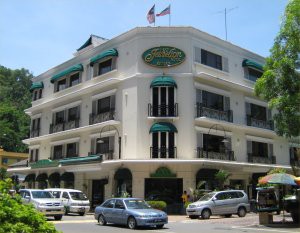 |
Continuing my exploration of Kota Kinabalu, and the local culture there, I saw the famous Jesselton hotel.The hotel was first founded in 1954.
Kota Kinabalu had originally been called Jesselton after Sir Charles Jessel, Vice Chairman of the British North Borneo Company. |
| Other famous sights, were this area.Although a modern back packer district, it was historically called Australia District, after the Australian soldiers, who were billeted here during the war. |
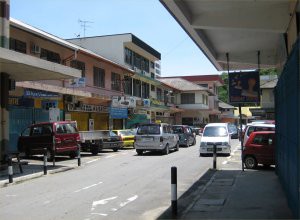 |
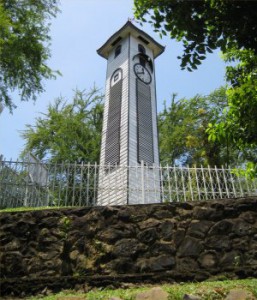 |
Building a colony like this, came at a personal cost.Francis George Atkinson, the First District Officer of Jesselton, died of Malaria aged 28, shortly after being stationed here.
His mother Mary Edith Atkinson sent money to Jesselton for the construction of this clock, dedicated to his memory.
It stands proudly next to Signal Hill Road, near the Police Station. |
| Sabah tourist board building.It is, along with the clock, one of only 3 buildings that survived the bombing of the area whilst occupied by the Japanese army. |
 |
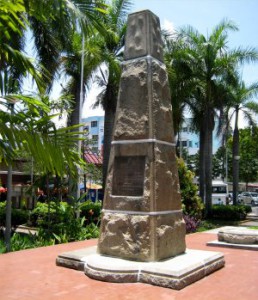 |
This memorial was to the Australian soldiers, who died during the war.My mate Dan had, like me, arranged several different activities, but saved a few free days for spontaneous adventure.
After a quick chat with a member of the hotels excellent staff, we booked transportation and a guide, to see a few more things the following day. |
| Our first stop, was Sabah museum.This is us photographed outside. |
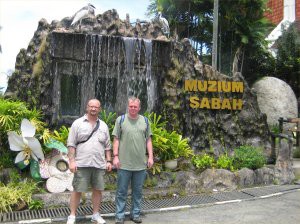 |
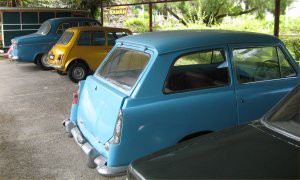 |
It wasn’t possible to take pictures inside the museum (I’m always disappointed when I hear that). Even more frustrating, the 3rd floor was closed to the public.The collection at the museum told of the history of Sabah, its independence and various sections about village living.
Some of the artefacts were a little more eccentric, and here, a selection of old cars is on display. |
| This Rolls Royce stood out from the crowd (although there was no indication who had owned it, why it was special etc). |
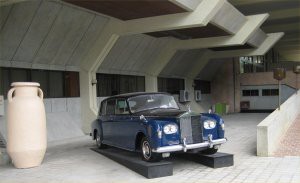 |
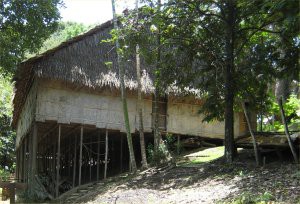 |
As we wandered around the car park looking for a cafe, we noticed this outdoor section of the museum.I couldn’t contain my excitement. Shelter building is my favourite area of bushcraft, and here was a dozen different kinds of traditional long-houses.
As you can see from this side view, an entire village can live in just one of these things. |
| Inside the long houses, it was cool and airy.Due to the design of the bamboo beds, they were springy and very comfortable.
The poles above were used for hanging out clothes to dry, if it was raining outside. |
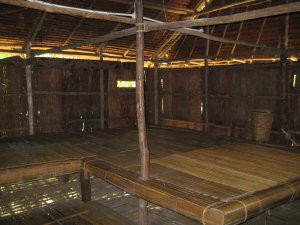 |
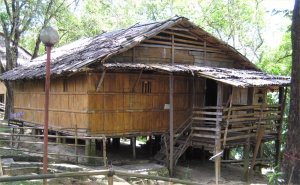 |
Another type of long house. |
| Inside another hut you can see the length inside, and that the walls are slanted in this design. |
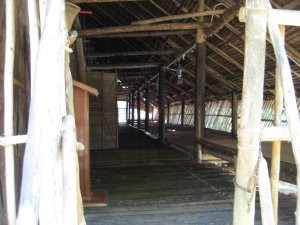 |
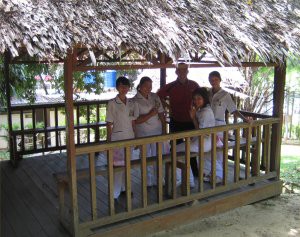 |
I’m always inspired by the connection between past and present.Nearby is a modern hospital. Some health care professionals, had wandered over to the museum to relax in the shade and eat their lunch.
They were kind enough to allow me to photograph them. |
| As we leave the museum, we pass the Kota Kinabalu state Mosque.Our next destination, was the Monosopiad Kadazan cultural village. |
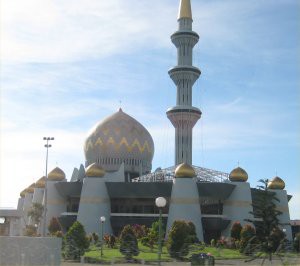 |
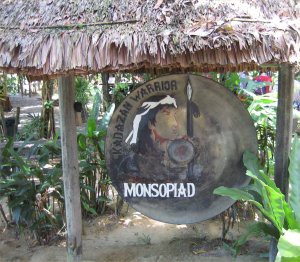 |
Its name, Monosopiad, comes from the name of the original tribal leader.Before the SAS became involved in counter insurgency in Malaysia and the country became independent, the British government paid head hunters a bounty to hunt the communist insurgents.
Its said that they would pay head hunters for each ear they brought back. I wasn’t so interested in that, but I wanted to see how these people would have lived in the jungle.
The centre is both a museum, and a working example of a traditional Kadazan village. |
| As we arrived at the village we were given a complimentary drink of traditional rice wine.Our driver wandered around with us, and we were assigned a Kadazan guide, to show us around the village.
The first stop on our tour, was music and dance. Not really our sort of thing, so we progressed on. |
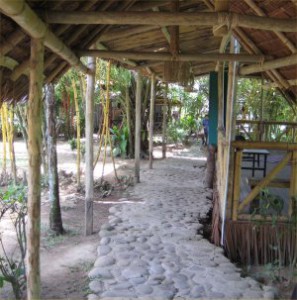 |
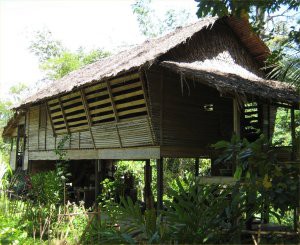 |
As we continued around, we found 2 superb examples of Kadazan architecture.A traditional Kadazan long house, similar to the ones I had seen earlier in the morning… |
| And a much smaller house, where either the chief or spiritual leader would live. |
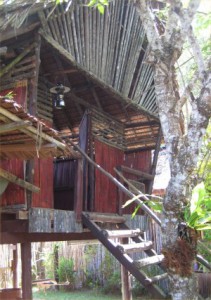 |
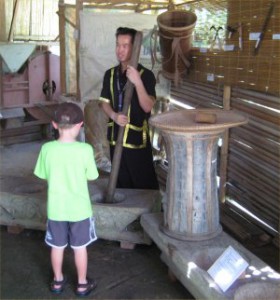 |
Although our guide and the other people there, don’t actually live in the village, they are all from the Kadazan tribe.Here our guide shows us some of the farming and harvesting tools used by the Kadazan, including this hand mill.
He was extremely professional, and his English was better than mine. |
| An interactive section of our tour allowed us to take part in some hunting games.Here Dan has a go with a traditional blow pipe.
Made of Ironwood, they really were superb, and I was most impressed with their accuracy. |
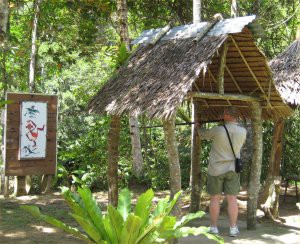 |
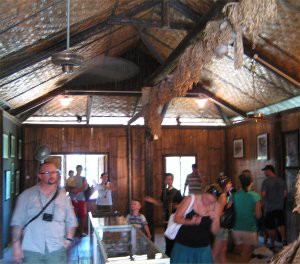 |
We were actually shown around the head room. Hanging from the ceiling above Dan, are the skulls of several people.It seemed barbaric, but like so many times on my travels, a closer look at the facts, reveal the complete opposite.
The basic idea, is that when 2 tribes were heading towards war, the Kadazan would organise a simple dual to the death.
That would mean that only one person would die, instead of several hundred. Our guide stated proudly, that his tribe very seldom lost.
Once the head was brought back to the head room, it was prepared over the following 7 days and nights, during which time, the chief of the tribe would not sleep or eat.
In effect, the ceremony, praised the head, as the dead man, had effectively given his life for the peace of both tribes. |
| Before heading off, we rest on the beautiful veranda, overlooking the the river (with more rice wine !). |
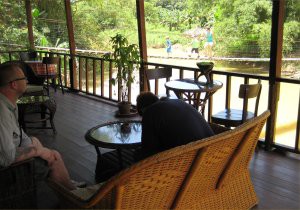 |